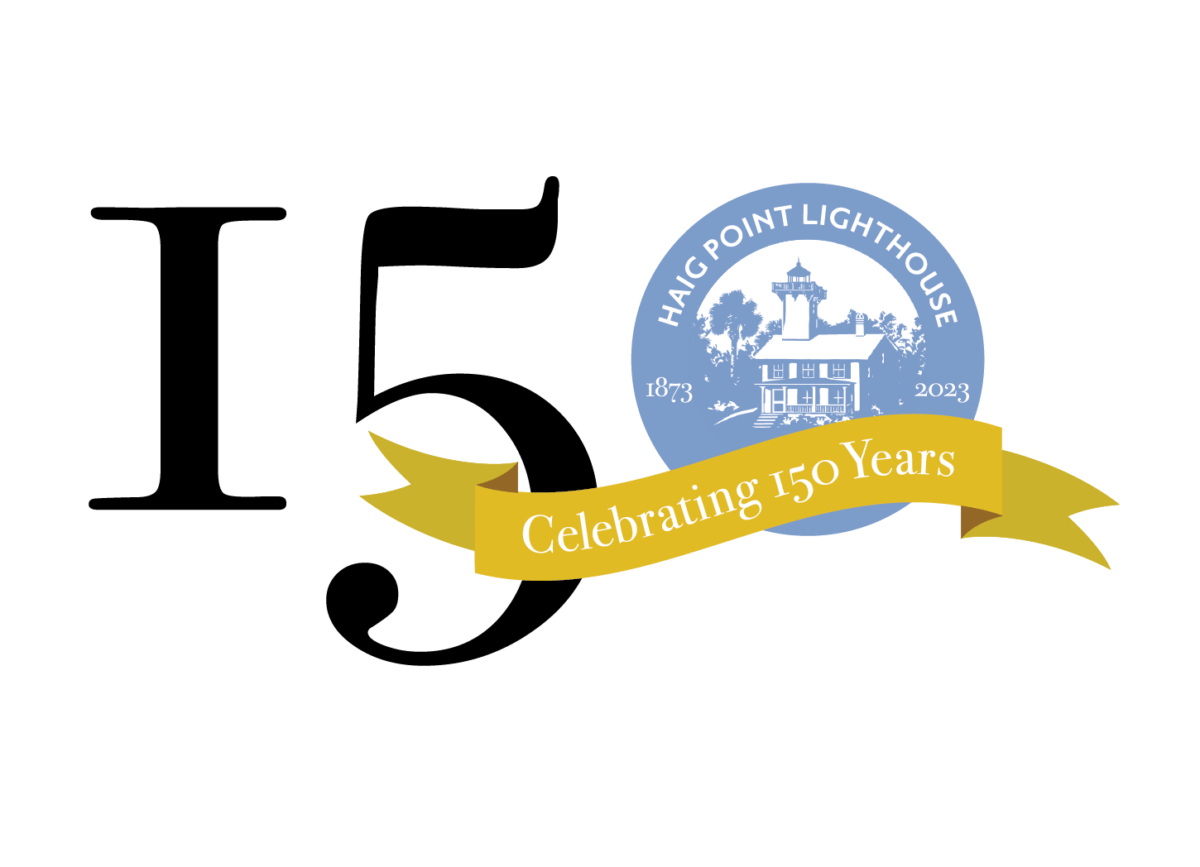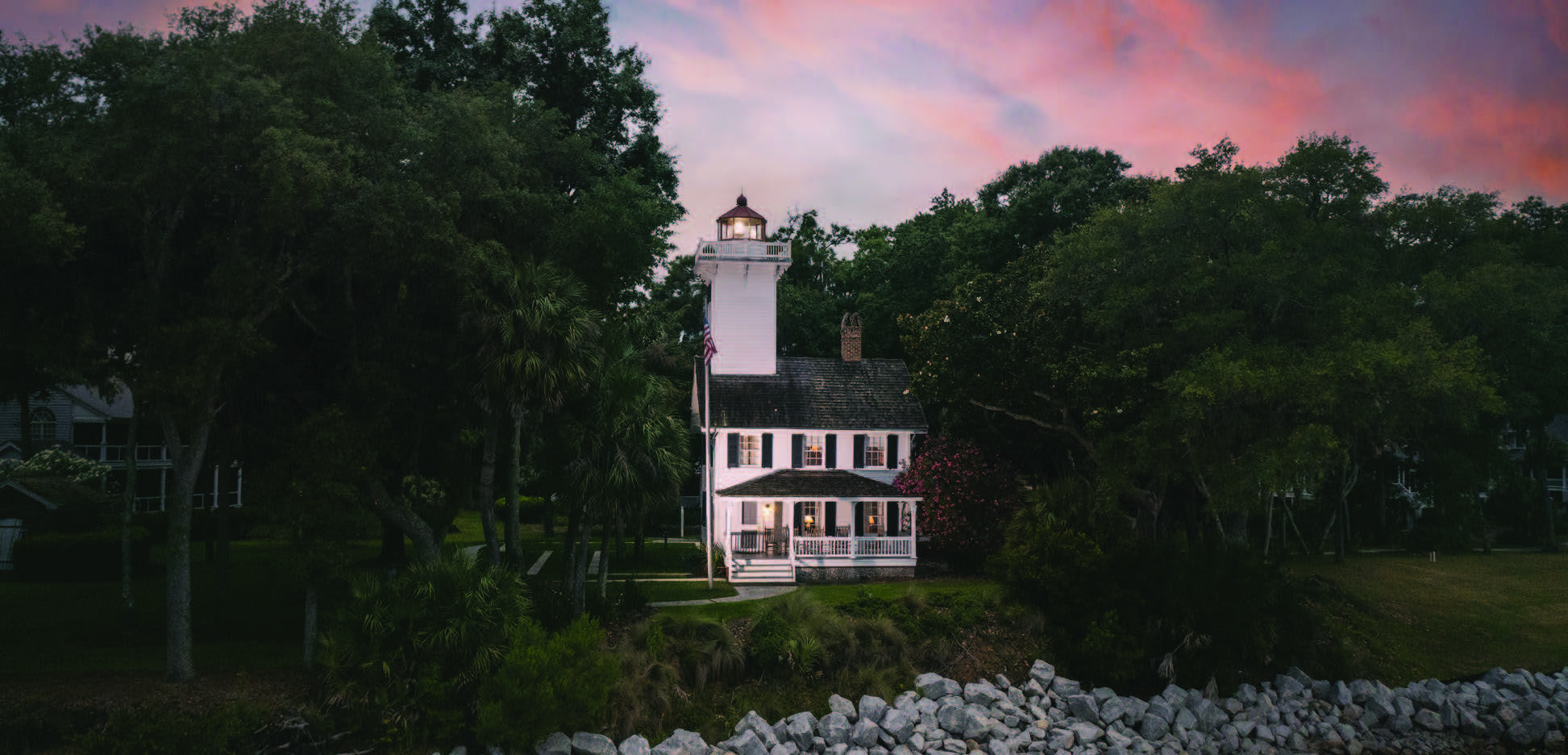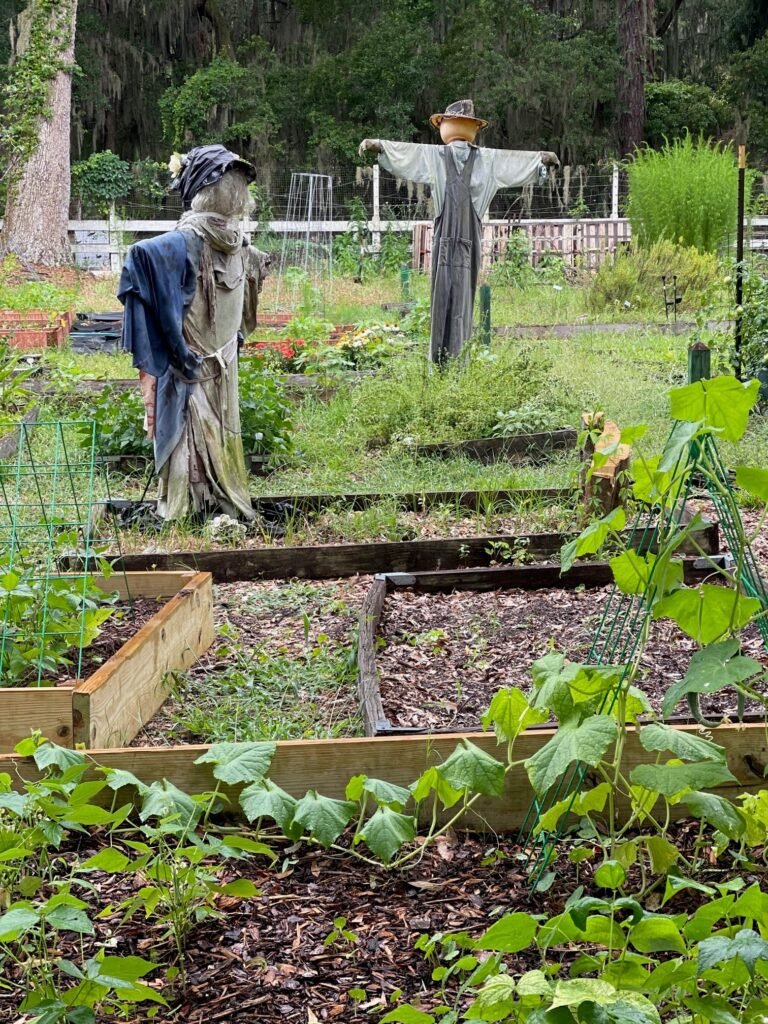
A brief history of our lighthouse as it turns 150 years old this year.
Join us all year at various events as we celebrate this milestone.
In December 1872, James H. Reed of Washington D.C. was contracted to acquire all the material for the two range lights and dwelling, transport the material to Daufuskie Island, and supply the necessary labor to erect the structure. A two-story wooden keeper’s dwelling, with a tower extending from the eastern end of its pitched roof, was constructed on the foundation of Blodgett’s plantation mansion. To the south, the smaller front
range light was also built of wood.
Patrick Comer was appointed first caretaker of the lights on August 29, 1873, with his wife Bridgett serving as his assistant. The Comers activated the lights for the first time on October 1, 1873. Ships would align the two range lights, which were separated by 750 yards, to safely enter Calibogue Sound. As the entrance to the sound would move due to shifting sand, the front range light was placed atop a pair of wooden rails so it could be moved to track the sound’s entrance.
In 1886, the earthquake that caused such extensive damage in Charleston shook Haig Point Lighthouse. Plaster rained down from the interior walls, which were subsequently covered with bead board that still remains in the lighthouse. Keeper Comer was in the lantern room when the first shock hit on August 31, and reported that the quake “came like the roaring of a prairie fire” and lasted fully fifty seconds. The station’s clock stopped for the first time in thirteen years, noting a time of 9:25 p.m. Patrick Comer passed away in an upstairs bedroom in 1891 after
eighteen years at the lighthouse.
Richard Stonebridge served as keeper of Haig Point Lighthouse for thirty-two years, beginning his service in 1891 and retiring on July 1, 1923. A fireproof oil house was constructed just east of the lighthouse in 1892 to store the volatile kerosene that was used in lighthouses during this period. Also, in 1895, a 6,000-gallon cistern was built just west of the lighthouse, replacing an earlier one with a capacity of 4,000 gallons. Rather than collecting water from the metal gutters attached to the eves of the roof, the new cistern was filled with well water. Perhaps the increased capacity of the cistern was what led to the installation of a bathtub in 1914.
Following Stonebridge’s retirement, Charles L. Sisson was appointed keeper, but a year later the station was discontinued. Uninhabited during the following years, the lighthouse slowly deteriorated. Shutters and doors sagged on hinges, the roof leaked, the glass was broken out of the windows and lantern
After the government disposed of the lighthouse, Haig Point Plantation and Lighthouse were never owned by the same person until George H. Bostwick purchased Haig Point Plantation in 1961 and Haig Point Lighthouse in 1965. Bostwick set out to repair the neglected lighthouse as recorded in this 1967 account from a Beaufort County newspaper: “Once a desolate ruin that gazed from the tip of Daufuskie Island through shattered windows, the structure now boasts fresh white paint, a new roof, refinished floors, modern electrical wiring, screened windows, and other refinements. The glasses in the lamp house have been replaced and the tower is capped with red roof paint.”
On October 23, 1984, International Paper Realty Corporation purchased Haig Point with plans to develop a low-key, resort community. One of their first projects was to hire archaeologist Larry Lepinoka and historical architect Colin Brooker to date the tabby slave ruins and find the foundation of Haig Point Mansion. Digging around the lighthouse, they discovered the lighthouse’s foundation was actually part of the mansion’s tabby walls, and a fireplace from the original mansion was located underneath the lighthouse’s kitchen.

The massive foundations discovered at the lighthouse supported one of the largest tabby houses ever built. Rather than bury the foundations, the tops of the walls were capped with a cement similar to tabby, leaving an outline of the mansion tracing through the ground around the lighthouse.
Using the original plans for the dwelling, the lighthouse was meticulously restored under the direction of Bill Phillips. On October 18, 1986, Haig Point Lighthouse was re-lit in a festive ceremony that included a fireworks display and members of the Savannah Symphony playing “Stars and Stripes Forever.”
Today, the lighthouse is used to accommodate guests of the Haig Point community. A Plexiglas panel near the fireplace in the kitchen permits visitors to view the brick fireplace from the old tabby mansion. Those fortunate enough to spend the night will find a pair of bedrooms upstairs, and a kitchen, dining room, and living room downstairs. The wooden rockers on the front porch provide the perfect place to gaze out over Calibogue Sound as you sip a cool glass of lemonade on a warm southern evening and review the history that has transpired on Daufuskie’s Haig Point
- Courtesy of lighthousefriends.com



